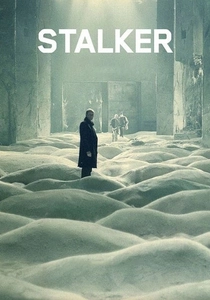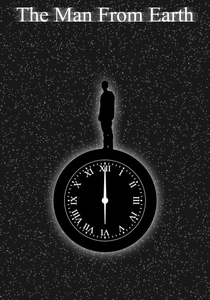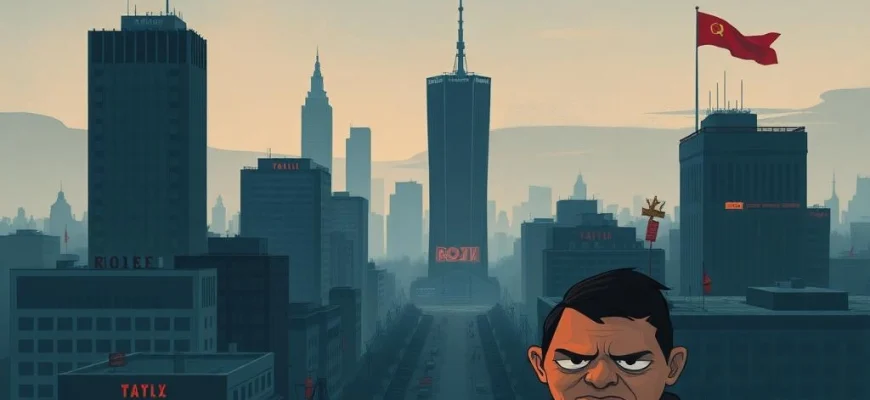If you enjoyed the surreal and satirical world of 'Zerograd' (1988), this article is for you. We've curated a list of 10 movies and shows that share its dark humor, absurdist tone, and biting social commentary. Whether you're a fan of Soviet-era satire or just love thought-provoking cinema, these picks will keep you entertained and intrigued.

The Cranes Are Flying (1957)
Description: A visually striking and emotionally powerful film that explores love, loss, and the human cost of war, with a lyrical and deeply moving narrative style.
Fact: The film's innovative cinematography, including its use of handheld cameras and unconventional angles, was groundbreaking for its time and influenced future filmmakers.
 Watch Now
Watch Now 
Ivan's Childhood (1962)
Description: A haunting and poetic war film that juxtaposes the innocence of childhood with the horrors of war, using dreamlike sequences and stark realism to create a deeply affecting experience.
Fact: The film's young protagonist was discovered by the director in a Moscow school, chosen for his natural and unaffected performance style.
 Watch Now
Watch Now 
The Color of Pomegranates (1969)
Description: A visually arresting and symbolic film that uses rich imagery and allegory to explore themes of art, spirituality, and cultural identity, with a deeply poetic and abstract style.
Fact: The film was heavily censored upon its initial release, with many of its symbolic sequences deemed too obscure or controversial by Soviet authorities.
 Watch Now
Watch Now 
Solaris (1972)
Description: A deeply philosophical sci-fi film that examines human consciousness, memory, and the nature of reality, with a haunting and introspective atmosphere.
Fact: The film's haunting score was created using a combination of classical music and electronic sounds, contributing to its eerie and otherworldly feel.
 Watch Now
Watch Now 
Mirror (1975)
Description: A poetic and non-linear film that blends personal memory, historical events, and surreal imagery to create a deeply introspective and emotionally resonant experience.
Fact: The film incorporates real footage from historical events, including World War II, seamlessly woven into its dreamlike narrative structure.
 Watch Now
Watch Now 
Stalker (1979)
Description: A meditative and slow-paced film that delves into metaphysical and existential themes, featuring a mysterious and surreal journey that challenges the characters' perceptions of reality.
Fact: The film was shot twice because the original footage was accidentally destroyed during development, leading to a completely different visual approach in the final version.
 Watch Now
Watch Now 
Come and See (1985)
Description: A harrowing and immersive war film that captures the brutality and psychological toll of conflict through a surreal and nightmarish lens, blending realism with hallucinatory sequences.
Fact: The director used live ammunition in some scenes to heighten the realism, and the lead actor reportedly suffered from PTSD due to the intense filming process.
 Watch Now
Watch Now 
Kin-dza-dza! (1986)
Description: A satirical and absurdist sci-fi film that critiques societal norms and human behavior through a bizarre and surreal alien world, blending humor with existential reflection.
Fact: The film's invented alien language, 'Chatlanian,' was later expanded by fans into a fully functional conlang with its own grammar and vocabulary.
 Watch Now
Watch Now 
The Sacrifice (1986)
Description: A visually stunning and deeply spiritual film that explores themes of faith, sacrifice, and the fragility of human existence, with a dreamlike and contemplative narrative.
Fact: The film's famous long take, a single unbroken shot lasting several minutes, was achieved in one take after multiple failed attempts, adding to its legendary status.
 Watch Now
Watch Now 
The Man from Earth (2007)
Description: A thought-provoking, dialogue-driven film that explores deep philosophical and existential questions through a minimalist setting, much like the introspective and cerebral nature of the reference.
Fact: The entire film was shot in just a few days, primarily in a single cabin, emphasizing its focus on dialogue and ideas over visual spectacle.
 Watch Now
Watch Now 








